Related Research Articles
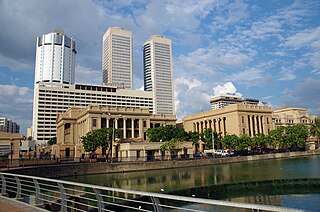
Colombo is the commercial capital and largest city of Sri Lanka by population. According to the Brookings Institution, Colombo metropolitan area has a population of 5.6 million, and 752,993 in the Municipality. It is the financial centre of the island and a tourist destination. It is located on the west coast of the island and adjacent to the Greater Colombo area which includes Sri Jayawardenepura Kotte, the legislative capital of Sri Lanka and Dehiwala-Mount Lavinia. Colombo is often referred to as the capital since Sri Jayawardenepura Kotte is itself within the urban/suburban area of Colombo. It is also the administrative capital of the Western Province and the district capital of Colombo District. Colombo is a busy and vibrant city with a mixture of modern life, colonial buildings and monuments.
The music of Sri Lanka has its roots in five primary influences: ancient folk rituals, Hinduism religious traditions, Buddhist religious traditions, the legacy of European colonisation, and the commercial and historical influence of nearby Indian culture—specifically, Kollywood cinema and Bollywood cinema.

Vithana Kuruppu Arachchilage Clarence Arthur Somasinghe Wijewardena JP was a Sri Lankan singer, composer and musician. Considered one of the most respected musicians in Sri Lanka, Wijewardena revolutionized Sri Lankan Sinhala Pop Music with the use of the electric guitar in Sinhala music, in the 1960s. Due to his influence on Sinhala pop music, he is often named as the father of Sri Lankan pop music.

Nihal Bhareti was a popular radio announcer with the Sri Lanka Broadcasting Corporation in Colombo. He joined Radio Ceylon in the 1960s. His mellow voice attracted hundreds of fans in Sri Lanka as well as on the Indian sub-continent.
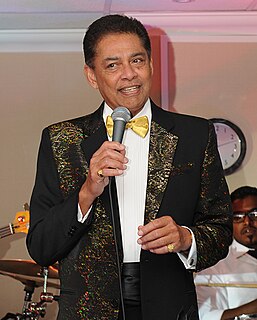
Desmond de Silva is a Sri Lankan singer and entertainer, noted for his youthful voice that has changed little over four decades of performing, and regarded as the "King of Baila." Born in Matara in southern Sri Lanka, De Silva has performed to packed concert halls across the world.
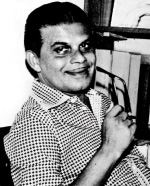
Karunaratne Abeysekera was one of Sri Lanka's most famous Sinhala broadcasters. He was also a poet and songwriter and was widely admired for his excellent command of Sinhala.

Moratuwa is a large suburb of Colombo, on the southwestern coast of Sri Lanka, near Dehiwala-Mount Lavinia. It is situated on the Galle–Colombo main highway, 18 km south of Colombo city centre. Moratuwa is surrounded on three sides by water, except in the north of the city, by the Indian Ocean on the west, the Bolgoda lake on the east and the Moratu river on the south. According to the 2012 census, the suburb had a population of 168,280.
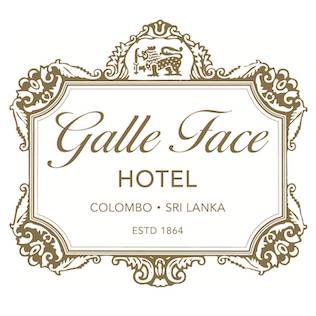
The Galle Face Hotel, founded in 1864, is one of the oldest hotels east of Suez. It is located on Galle Road, Colombo. The Ceylon Hotels Corporation is now part of the Galle Face Hotel Group. The hotel is a member of Select Hotels and Resorts International. The current chairman of the hotel is Sanjeev Gardiner, since the demise of his father Cyril Gardiner in 1997. It is listed as one of the "1000 Places to See Before You Die" in the book of the same name. It received the "Best Heritage Hotel" title three years running at the Presidential Awards for Travel and Tourism, held in June 2010, June 2011 and September 2012. In addition it won the first-ever PATA award for Best International Heritage Hotel, in 2012. In September 2012, it became the first hotel in Sri Lanka to be featured on a postage stamp, along with three other iconic buildings in Colombo.
Earle Douglas (Dougie) Meerwald was a pioneering Ceylonese musician. Dougie Meerwald was the vocalist of one of the leading Ceylonese swing and dance bands of the early 1950s - The Manhattans. Western popular music and dance band music was all the rage in South Asia after World War II and Ceylon was no exception.
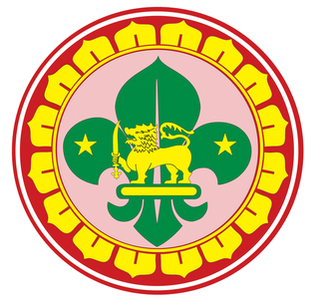
The Sri Lanka Scout Association, is a Scouting organization in Sri Lanka operated by the Ceylon Scout Council. The Ceylon Scout Council is a corporation formed by Act No 13 of 1957. The association became a member of the World Organization of the Scout Movement in 1953. The coeducational Sri Lanka Scout Association has 33,709 members as of 2014. in 2016 the year that the National Organisation reached 104 years the Scouting Population in Sri Lanka had increased to 55,078 the growth taking place against the year 2015 was 29% which was a great achievement by the SLSA.
La Bambas was an influential Sri Lankan music group, composed of Priya Peiris, Rolinson Ferdinando, Brian Fernando, Erinton Perera and Lasla Fernando. They were one of the first Sinhala groups to utilize a box guitar, and were popular in Sri Lanka during the late '1960s; their hits include "Cock-a-doodle-do", "Nuwara Menikela", "Himidiriye " and "Lak Nadhee".

Galle Face is a 5 ha ocean-side urban park, which stretches for 500 m (1,600 ft) along the coast, in the heart of Colombo, the financial and business capital of Sri Lanka. The promenade was initially laid out in 1859 by Governor Sir Henry George Ward, although the original Galle Face Green extended over a much larger area than is seen today. The Galle Face Green was initially used for horse racing and as a golf course, but was also used for cricket, polo, football, tennis and rugby.

Baddaliyanage Don Joseph John, popularly known as Sunil Santha, was a renowned and influential Sri Lankan composer, singer and lyricist. He was pivotal in the development of Sinhala music and folk songs in the mid to late 1940s and early 1950s. He composed the beloved soundtracks to Lester James Peries' films Rekava and Sandesaya in 1956 and 1960. In a later comeback, he produced several experimental works.
Cyril Tudor Fernando, popularly known as C.T. Fernando, was a Sri Lankan singer and composer. One of the most popular singers in Sri Lankan music often known as the First Pop singer in Sri Lanka, Fernando was praised by critics for the themes and wording of his songs like "Vana Bamaru," "Bilinda Nelwa Ukule" and "Rosa Male." His other popular songs include "Lo Ada Ninde", "Gile Male Tarawa" and "Mariya Mawu Kuse."

Mariazelle Goonetilleke is a Sri Lankan singer and musician. She has performed not only in Sri Lanka but also as far as the United Kingdom, the United States, the United Arab Emirates, Singapore and Australia.
Deshamanya Matharage Rita Genevieve Fernando, better known by her stage name Latha Walpola, is a prominent Sri Lankan vocal artist. It was as a member of a church choir that Walpola began a career that led to her becoming one of Sri Lanka's premier singers of her day. Today her fans often refer to her as "The Nightingale of Sri Lanka"
Mignonne
Vivienne de Silva Boralessa was a Sri Lankan singer known particularly for her Buddhist devotional music. Her fame peaked in the 1950s, in what is known as Sri Lanka's 'gramophone era'.
Kala Suri Gnai Seenar Bangsajayah,, popularly known as G. S. B. Rani, was a Sri Lankan actress in Sri Lankan cinema, theater as well as a songstress, politician and a media personality. She was one of the most popular playback singers in early Sri Lankan cinema industry with a career spanned over five decades.
Morris Denzil Bernard 'Barney' Wijesinghe,, popularly known as Morris Wijesinghe, was a Sri Lankan musician and playback singer. One of the popular pop artists in 1980s of Sri Lankan music with a career spanning more than four decades, Wijesinghe has sung several popular songs including Doowillen Wathsunu Thawara, Nil Ahas Thale Aage, Oba Enna and Peradiga Ahase.
References
- ↑ http://life.dailymirror.lk/article/4553/the-original-jetliners-farewell-concert
- ↑ Billboard. 29 April 1972 https://books.google.com/books?id=mEUEAAAAMBAJ&q=5th+Olympiad+of+Song&pg=PA59.Missing or empty
|title=(help)